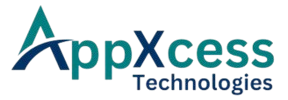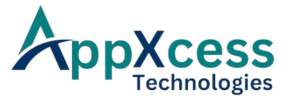As the world transitions towards cleaner, more sustainable energy sources, integrating renewable energy with Information Technology (IT) has become a crucial step in achieving energy efficiency and sustainability goals. IT is playing an instrumental role in helping utilities and energy providers integrate renewable sources such as solar, wind, and hydropower into the energy grid. By combining the power of renewable energy with smart technology, IT is revolutionizing how energy is generated, distributed, and consumed, paving the way for a more sustainable future.
1. Smart Grids: Enabling Efficient Integration of Renewables
One of the most impactful ways IT is integrating renewables into the energy infrastructure is through the use of smart grids. Smart grids are advanced electrical grids that use digital technology to monitor and manage energy distribution in real time. By integrating renewable energy sources like solar and wind with smart grids, utilities can more effectively balance supply and demand, ensuring that energy is distributed efficiently across the system.
Smart grids can automatically adjust to fluctuations in renewable energy generation, such as sudden drops in solar output during cloudy weather or intermittent wind speeds, by redistributing energy from other sources or storing excess energy for later use. This dynamic response ensures grid stability and reduces the reliance on fossil fuel-based power plants, helping to integrate renewable sources seamlessly into the overall energy mix.
2. Energy Storage Systems: IT and the Future of Renewable Energy
Energy storage is one of the key challenges in integrating renewable energy sources, as their output can vary depending on weather conditions. IT-driven energy storage solutions, such as advanced battery systems and other storage technologies, are addressing this challenge by storing excess energy generated during periods of high renewable production and releasing it during times of low production.
By using real-time data and predictive analytics, energy storage systems can optimize when and how energy is stored and distributed. IT-enabled storage solutions allow utilities to better manage the supply of renewable energy, providing a more reliable and consistent energy supply to consumers. This integration is crucial for reducing reliance on traditional, non-renewable energy sources and achieving sustainability goals.
3. The Role of Big Data in Optimizing Renewable Energy
Big data analytics is playing a significant role in optimizing renewable energy production and consumption. By collecting and analyzing vast amounts of data from solar panels, wind turbines, weather forecasts, and consumption patterns, utilities can make data-driven decisions to improve energy production and distribution.
For example, big data can help predict energy generation patterns based on weather data, allowing utilities to adjust their energy output to match demand more accurately. It can also help in identifying underperforming assets, such as wind turbines or solar panels, ensuring that renewable energy systems operate at peak efficiency. This data-driven approach helps to maximize the potential of renewable energy, ensuring that it can meet the growing energy demands of the world.
4. Internet of Things (IoT) for Real-Time Monitoring and Control
The Internet of Things (IoT) is enhancing the way renewable energy systems are monitored and controlled. IoT sensors and devices can provide real-time data on energy generation, storage levels, and grid performance. This data is invaluable for operators managing renewable energy systems, as it allows for instant adjustments and proactive maintenance.
IoT devices are particularly useful in solar and wind power plants, where they help monitor the performance of individual panels or turbines. By collecting data from these devices, operators can identify and address issues before they result in system failures, ensuring optimal performance and minimizing downtime. IoT also allows consumers to monitor and adjust their energy consumption, leading to more efficient use of renewable energy at the household level.
5. Artificial Intelligence (AI) for Predictive Maintenance
Artificial Intelligence (AI) is playing a crucial role in the operation and maintenance of renewable energy systems. By analyzing historical data and using machine learning algorithms, AI can predict when maintenance is required, identify potential failures, and optimize the performance of renewable energy infrastructure.
For example, AI can be used to predict the lifespan of wind turbine blades or solar panel efficiency, enabling operators to take proactive steps in maintaining equipment before problems occur. Predictive maintenance reduces downtime, lowers maintenance costs, and ensures that renewable energy assets continue to operate at peak efficiency, ultimately contributing to a more sustainable and reliable energy system.
6. Decentralized Energy Generation and Blockchain Technology
Blockchain technology is increasingly being explored for its potential to enable decentralized energy generation and peer-to-peer energy trading. By providing a secure, transparent platform for energy transactions, blockchain allows consumers to buy and sell excess renewable energy, such as solar power, directly with one another, without the need for a central intermediary.
This decentralized approach to energy generation empowers consumers to take control of their energy production and consumption, enabling them to contribute to a more sustainable energy grid. Blockchain technology also ensures the integrity of these transactions, providing a transparent and verifiable record of energy exchanges, which is essential for maintaining trust in a decentralized system.
7. Smart Homes and Energy Efficiency
As more consumers adopt smart home technologies, IT is helping integrate renewable energy sources into everyday energy usage. Smart thermostats, energy-efficient appliances, and home energy management systems (HEMS) can be programmed to optimize energy use based on real-time data from renewable energy sources like solar panels.
For example, a smart thermostat can adjust the heating and cooling of a home based on the availability of solar power, helping homeowners reduce their energy consumption and maximize the use of renewable energy. By integrating renewable energy with smart home technologies, consumers can play an active role in managing their energy use, further reducing their carbon footprint and contributing to sustainability efforts.
8. Advancements in Renewable Energy Technologies
The integration of IT has also spurred significant advancements in renewable energy technologies. From improving the efficiency of solar panels to enhancing the energy output of wind turbines, IT is helping to drive innovation in the renewable energy sector. AI and machine learning are being used to optimize the design and operation of renewable energy systems, improving their reliability and performance.
As these technologies continue to evolve, renewable energy will become an even more viable and sustainable alternative to traditional fossil fuels. IT will play a pivotal role in accelerating the adoption of renewable energy by making it more efficient, cost-effective, and scalable, ultimately contributing to a cleaner and greener future.
Conclusion
The integration of renewable energy with IT is transforming the energy landscape by enabling smarter, more efficient energy systems. From smart grids and energy storage solutions to big data analytics and IoT, IT is playing a critical role in optimizing renewable energy production and consumption. As the world continues to shift towards more sustainable energy solutions, the role of IT in driving this transformation will only become more important, helping to create a more resilient and sustainable energy future for all.
At AppXcess Technologies, we are committed to helping businesses and energy providers leverage IT solutions to integrate renewable energy into their operations, improve efficiency, and achieve sustainability goals. Let us help you harness the power of IT to build a more sustainable energy future.
© AppXcess Technologies 2025. All Rights Reserved.

